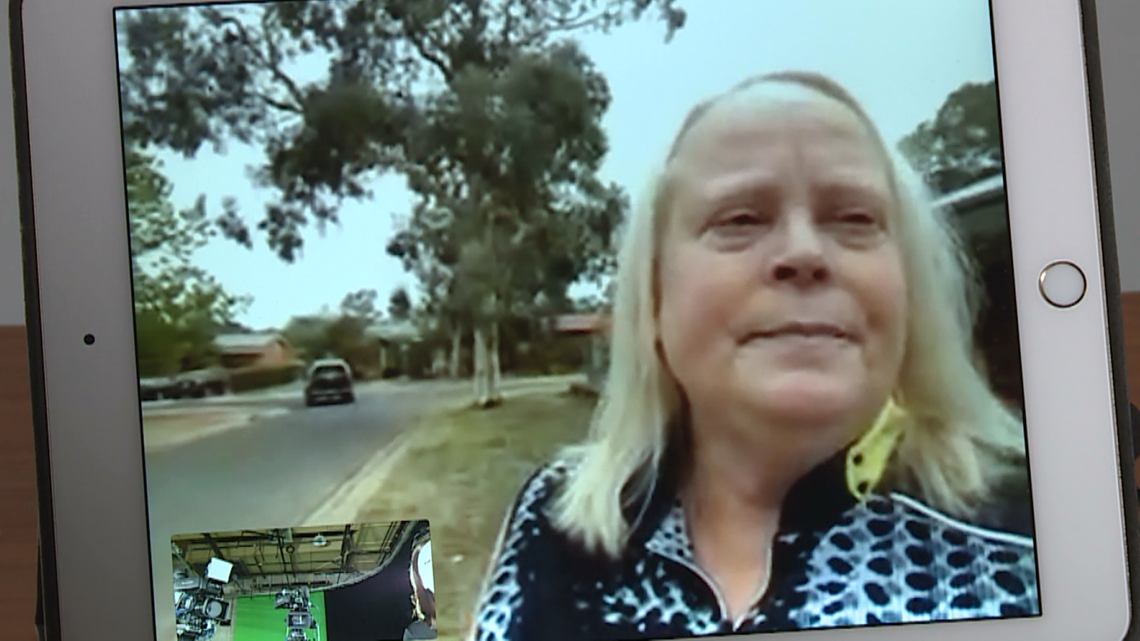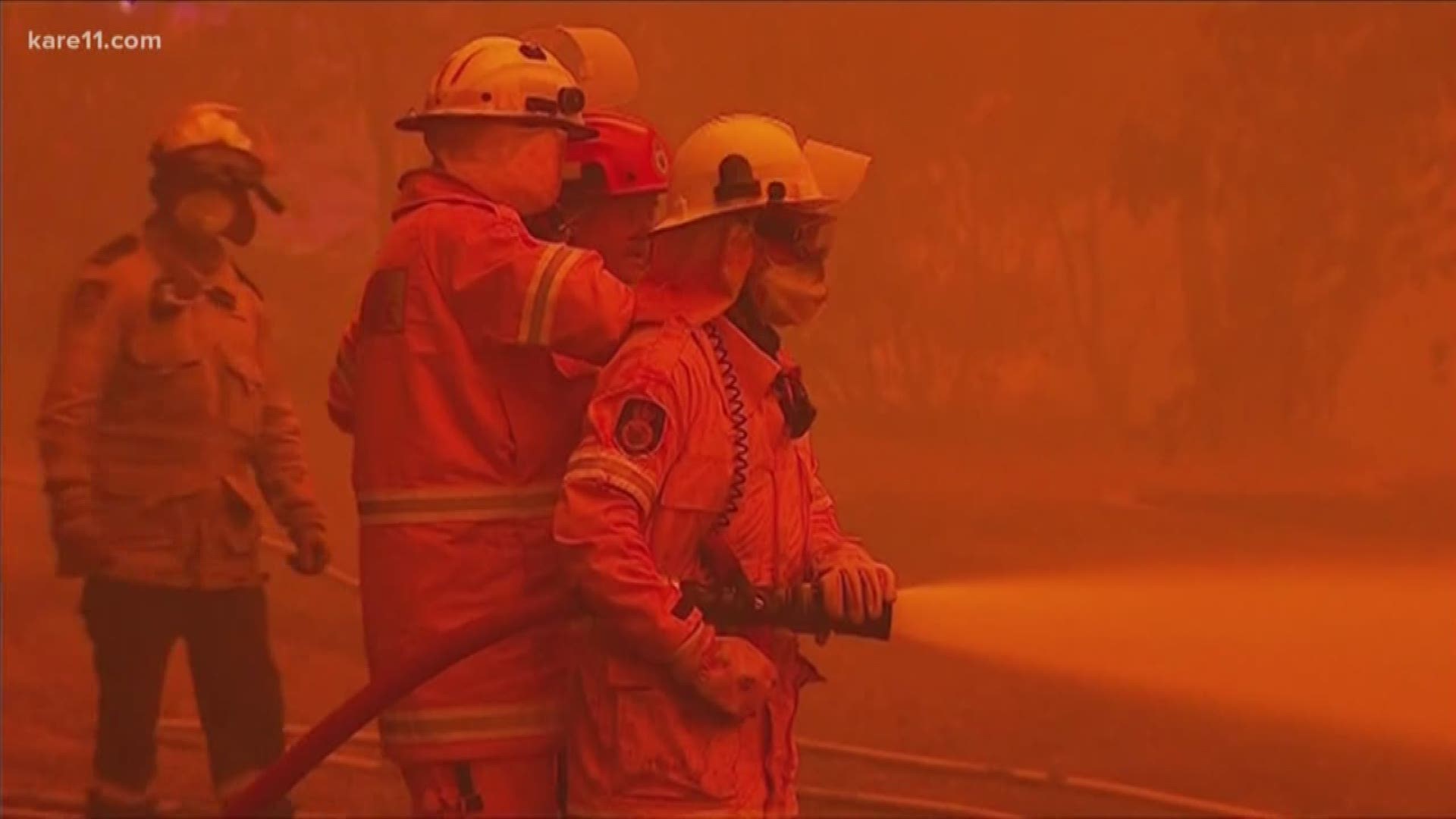CANBERRA, Australian Capital Territory — The wildfires in Australia have escalated to "an entirely new level," according to officials.
The fires have killed at least 24 people and destroyed almost 2,000 homes.
Judy Rixe of Corcoran, Minn. flew in to Australia on January 2. She's visiting her son who lives in Canberra.
"I just had no idea what it meant to have all this fire burn until you're kind of in it and you go to a mall and half the people have P2 masks on," Rixe said.
Rixe recalled the flight from Melbourne to Canberra, seeing patches of black and active fires.
"It was black everywhere you looked. It was unbelievable," she said.
Saturday afternoon, the country's capital broke its heat record of 80 years at 111 degrees Fahrenheit.


Bushfire smoke is impacting the air quality. According to several news reports, Canberra was ranked the worst city in the world for air quality on Saturday.
According to Rixe, the closest active fire to them is about 50 miles away. Rixe has been using a real-time air quality index online and said it topped out at 999 on Sunday night.
"Our EPA, they would say 300-500 is hazardous... You couldn't even go outside. We tried to do indoor activities like shopping and the stores were smoky inside. We just had to go home and stay inside," she said.
Record-breaking temperatures, a three-year drought and strong winds have fueled the fires. Environmentalists say climate change has made this fire season worse. Scientists estimate that half a billion animals have already died from the fires.
"Usually on the ride from the airport to his house, we always see kangaroos out in the wild. I've not seen one yet and we've been here five days. So you're just not seeing the wildlife," Rixe said.
However, Rixe is seeing people come together.
"We go to donation sites and people are bringing nappies and water and everyone is helping out," she said.
The Guardian has an article with a list a resources for helping those affected by the fires.

